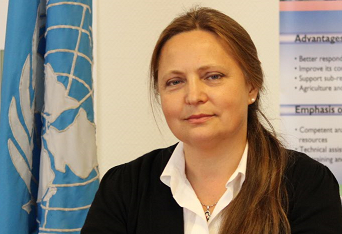- Why did FAO* decide that 2016 was the ‘Year of the Pulse’?

- How will an increased consumption of pulses contribute to food security?
Food security encompasses multiple aspects, such as food availability, access and affordability, stability and utilisation. Pulses are available in a wide diversity of species, varieties and cultivars and have capacity to grow in a broad range of ecological conditions throughout the world.
In terms of affordability and utilization, pulses are an inexpensive source of protein, has essential minerals, complex carbohydrates, dietary fibres, and various vitamins beneficial for health. Many people with special dietary needs can benefit from eating pulses: infants and young children to ensure nutritional adequacy, vegetarians and vegans to ensure adequate intake of protein especially when combined with cereals, women at reproductive age to replenish iron stores especially when consumed with food containing vitamin C to improve iron absorption, and coeliac patients since pulses are gluten-free. Low in fat and high in dietary fibre, with a low glycaemic index and high satiating capacity, pulses help to stabilize blood sugar, insulin levels and avoid food overconsumption, being an ideal food for weight management, may help to reduce the risk factors of coronary heart disease (cholesterol, blood pressure) and prevent diabetes.
Public health authorities recommend pulses as part of healthy diets and a key food group for preventing non-communicable diseases and optimizing health. It is important that pulses are consumed by all categories of population: low-income and wealthy groups and in all countries – developing, with transition economies and developed.
Pulses may be stored in dry places for long periods. Moreover, the proportion of food waste at the consumption stage due to spoilage is very low therefore pulses are a very good option for household food security.
- How does growing pulses lead to a more sustainable agriculture?
Pulses are exceptional crops able to significantly contribute to a more sustainable agriculture in a variety of ways. For example, pulses use water efficiently, which is beneficial for subsequent crops grown in rotation on the same field. The water used to produce one kilogram of animal-sourced protein-rich food is hundreds of times higher than the water necessary to produce one kilogram of pulses. Many pulses are drought-resistant and are suitable for arid climates and drought-vulnerable areas. Pulses have a favourable impact on soil organisms, increasing their number, diversity and activity, while minimising weeds, pests and disease agents. Another feature relevant for sustainable agriculture is the biological capacity of most pulses’ species to fix nitrogen. Some of them help as well to increase the availability of phosphorus in soils for companion crops grown in the same field and at the same time (inter-cropping) or for subsequent crops grown in rotation, thus naturally providing two fertilizers. By producing a smaller carbon footprint and by reducing the need for fertilizers in subsequent and/or companion crops, pulses are an important factor in climate-change mitigation and their importance is likely to further increase.
- What are the main challenges/barriers to produce and consume more pulses/plant-based proteins?
The many advantages of pulses are not well known or well understood, which is reflected in the lack of demand, investment, limited research, low yields and scarce availability of improved cultivars. The market prices are low, there are limited subsidies, and great losses at post-harvest stage in developing countries.
The consumption of pulses is uneven across regions and countries with higher consumption in developing countries and predominant use for feed in developed countries. Some (perceived) inconveniences may explain the limited demand, such as bloating, flatulence, and preparation time.
The IYP may support an important change towards enhancing the dietary use of pulses, it may promote the better use of both whole pulses and the pulse-derived ingredients, such as protein isolates, fibres and other components, thus contributing to more food diversity, convenience and to raising consumers’ demand. Pulses are excellent for showcasing the functional link between agriculture, food, nutrition and health.
- From your expertise, what advice would you give to the PROTEIN2FOOD consortium to address these challenges/barriers?
Breeding new varieties of pulses and yield improvement are at the interface of both the PROTEIN2FOOD and IYP objectives. Pulses are a good basis to develop innovative, cost-effective and resource-efficient food crops that are high in protein, with a positive impact on human health, the environment and biodiversity.
An important field of synergy, complementarity and collaboration is raising awareness on the extraordinary set of versatile properties of pulses, disseminating widely the new knowledge, results of research and information on new products, building connections and initiating opportunities for public-private partnerships for rapid translation of research into action, marketable products delivered through enhanced capacities of involved partners and matched with increased demand by consumers for these extraordinary nutrient-rich foods. There are huge opportunities for collaboration towards jointly achieving a sustainable food security and nutrition, better health and protected environment.
The research of PROTEIN2FOOD are an excellent opportunity to complement and enrich the attainment to the IYP objectives and I wish to PROTEIN2FOOD consortium remarkable scientific results, rapid and successful practical applications.
Thank you!
* Dr. Eleonora Dupouy is Food Safety and Consumer Protection Officer at FAO’s Regional Office for Europe and Central Asia, based in Budapest, Hungary
